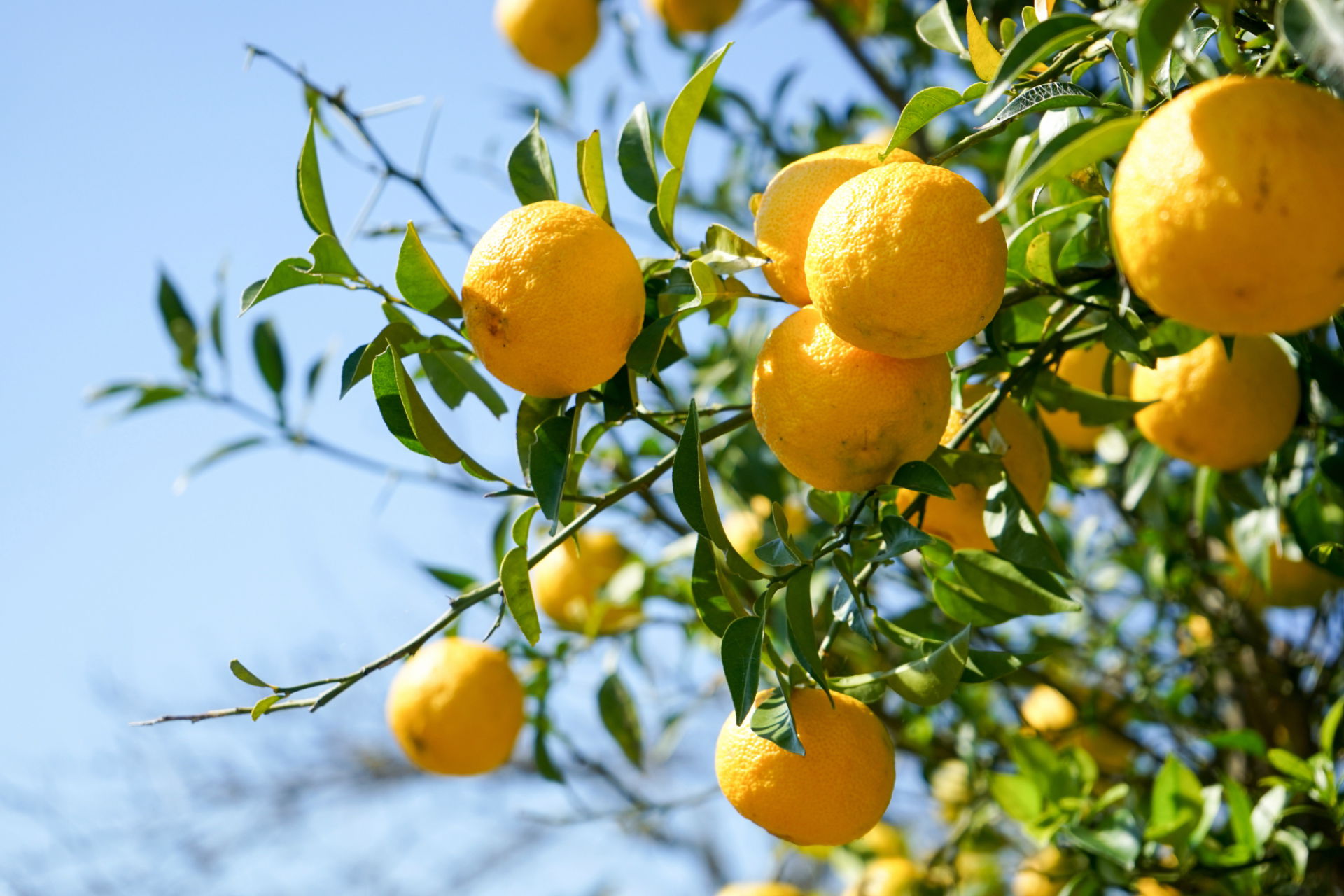Table of contents:
Yuzu – Citrus Spice
Yuzu is a yellow citrus fruit that is about the size of a tangerine and an orange. It is shaped more like a tangerine, quite bumpy and with large seeds in the flesh. Yuzu has a lot of vitamin C and is very healthy.
Yuzu season is in the winter. Yuzu originated in China and came to Japan and Korea during the Tang dynasty. Even today, it is still very common in Japanese and Korean cuisine. Yuzu has a very complex, unique aroma that is difficult to put into words. Its taste is similar to that of lemon and tangerine, among others. Yuzu is somewhat bitter and sour, since it is a citrus fruit, but it is also very, very aromatic. The rind of yuzu also has a strong aroma. If you are not familiar with the taste of yuzu, it can seem very foreign to you. As children, neither my brothers nor I liked yuzu because the fruit tastes so peculiar - but I have since come to appreciate its flavor. Just like wine, beer and olives taste somewhat unusual when you drink or eat them for the first time!
Yuzu is rarely eaten alone, but rather used as a spice. It is available as tea, spice (refined with chili), juice and soft drink. There are also sweets with yuzu flavor. Yuzu is also used as bath salts - you can buy various bath additives with yuzu scent, or put the fruit itself in the water, which smells very good. But since this is a food blog, I won't go into that any further!
Yuzu in Cooking
Yuzu is often used to refine ponzu (sauce) for nabe (hot pot). The cooking pot is placed directly on the table, the cooked ingredients are ladled out and refined with ponzu. There is a classic nabe variation without yuzu, but the version with yuzu is very popular because the vegetables, meat and fish in the nabe take on the special aroma of yuzu. The yuzu fruit is also very popular in gourmet cuisine due to its complex aroma. Gourmet chefs around the world - including in Germany - use yuzu for their dishes. Usually, however, only the zest of the fruit is used.
In Japan, yuzu is often an important ingredient for desserts. Dried or powdered yuzu is used in cakes, cookies or in the form of marmalade. There are also yuzu extracts, pastes, powders, purees as well as yuzu vinegar. There is also Koscho (which means “pepper” in Japanese). This is a spice paste made from grated yuzu peels, chili and salt and is used, for example, to season meat dishes.


Comments
Hi, mein absoluter Favorit mit Yuzu ist Yuzu Kosho ama midori. (grüne Yuzuschale, grüner Pfeffer, Salz) Leider ist das hier schwer zu bekommen. Beim Lesen Deiner Rezepte bekomme ich Hunger. Deshalb gibt es heute Abend Onigiri :), Morgen Suppe mit Udon, übermorgen.....
Würde gerne mal wissen wie ich an eine Yuzu Frische Yuzu in Deutschland bekomme